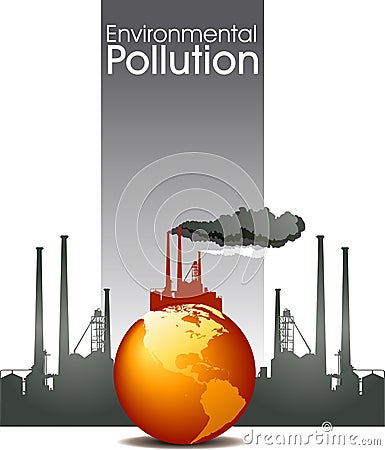Sunday, June 24, 2012
On 11:58 AM by Michael Kisula L. No comments
 nvironmental pollution, problems and control measures – Overview
nvironmental pollution, problems and control measures – Overview
A. Introduction and definition of environmental pollution – We know that, a living organism cannot live by itself. Organisms interact among themselves. Hence, all organisms, such as plants, animals and human beings, as well as the physical surroundings with whom we interact, form a part of our environment. All these constituents of the environment are dependent upon each other. Thus, they maintain a balance in nature. As we are the only organisms try to modify the environment to fulfill our needs; it is our responsibility to take necessary steps to control the environmental imbalances.
The environmental imbalance gives rise to various environmental problems. Some of the environmental problems are pollution, soil erosion leading to floods, salt deserts and sea recedes, desertification, landslides, change of river directions, extinction of species, and vulnerable ecosystem in place of more complex and stable ecosystems, depletion of natural resources, waste accumulation, deforestation, thinning of ozone layer and global warming. The environmental problems are visualized in terms of pollution, growth in population, development, industrialization, unplanned urbanization etc. Rapid migration and increase in population in the urban areas has also lead to traffic congestion, water shortages, solid waste, and air, water and noise pollution are common noticeable problems in almost all the urban areas since last few years.
Environmental pollution is defined as the undesirable change in physical, chemical and biological characteristics of our air, land and water. As a result of over-population, rapid industrializations, and other human activities like agriculture and deforestation etc., earth became loaded with diverse pollutants that were released as by-products. Pollutants are generally grouped under two classes:
(a) Biodegradable pollutants - Biodegradable pollutants are broken down by the activity of micro-organisms and enter into the biogeochemical cycles. Examples of such pollutants are domestic waste products, urine and faucal matter, sewage, agricultural residue, paper, wood and cloth etc.
(b) Non- Biodegradable pollutants - Non-biodegradable pollutants are stronger chemical bondage, do not break down into simpler and harmless products. These include various insecticides and other pesticides, mercury, lead, arsenic, aluminum, plastics, radioactive waste etc.
B. Classification of Environmental Pollution - Pollution can be broadly classified according to the components of environment that are polluted. Major of these are: Air pollution, Water pollution, Soil pollution (land degradation) and Noise pollution. Details of these types of pollutions are discussed below with their prevention measures.
(1) Air Pollution: Air is mainly a mixture of various gases such as oxygen, carbon dioxide, nitrogen. These are present in a particular ratio. Whenever there is any imbalance in the ratio of these gases, air pollution is caused. The sources of air pollution can be grouped as under

(i) Natural; such as, forest fires, ash from smoking volcanoes, dust storm and decay of organic matters.
(ii) Man-made due to population explosion, deforestation, urbanization and industrializations.
Certain activities of human beings release several pollutants in air, such as carbon monoxide (CO), sulfur dioxide (SO2), hydrocarbons (HC), oxides of nitrogen (NOx), lead, arsenic, asbestos, radioactive matter, and dust. The major threat comes from burning of fossil fuels, such as coal and petroleum products. Thermal power plants, automobiles and industries are major sources of air pollution as well. Due to progress in atomic energy sector, there has been an increase in radioactivity in the atmosphere. Mining activity adds to air pollution in the form of particulate matter. Progress in agriculture due to use of fertilizers and pesticides has also contributed towards air pollution. Indiscriminate cutting of trees and clearing of forests has led to increase in the amount of carbon dioxide in atmosphere. Global warming is a consequence of green house effect caused by increased level of carbon dioxide (CO2). Ozone (O3) depletion has resulted in UV radiation striking our earth.
The gaseous composition of unpolluted air |
|
|
The Gases
|
Parts per million (vol)
|
| Nitrogen |
756,500
|
| Oxygen |
202,900
|
| Water |
31,200
|
| Argon |
9,000
|
| Carbon Dioxide |
305
|
| Neon |
17.4
|
| Helium |
5.0
|
| Methane |
0.97-1.16
|
| Krypton |
0.97
|
| Nitrous oxide |
0.49
|
| Hydrogen |
0.49
|
| Xenon |
0.08
|
| Organic vapours |
ca.0.02
|
(a) It affects respiratory system of living organisms and causes bronchitis, asthma, lung cancer, pneumonia etc. Carbon monoxide (CO) emitted from motor vehicles and cigarette smoke affects the central nervous system.
(b) Due to depletion of ozone layer, UV radiation reaches the earth. UV radiation causes skin cancer, damage to eyes and immune system.
(c) Acid rain is also a result of air pollution. This is caused by presence of oxides of nitrogen and sulfur in the air. These oxides dissolve in rain water to form nitric acid and sulfuric acid respectively. Various monuments, buildings, and statues are damaged due to corrosion by acid present in the rain. The soil also becomes acidic. The cumulative effect is the gradual degradation of soil and a decline in forest and agricultural productivity.
(d) The green house gases, such as carbon dioxide (CO2) and methane (CH4) trap the heat radiated from earth. This leads to an increase in earth’s temperature.
(e) Some toxic metals and pesticides also cause air pollution.
Subscribe to:
Post Comments (Atom)
Search
"YOUR WORLD! YOUR LIFE! TOGETHER WE CAN KEEP THE WORLD THE SAFIER PLACE!!!
 nvironmental pollution, problems and control measures – Overview
nvironmental pollution, problems and control measures – Overview
A. Introduction and definition of environmental pollution – We know that, a living organism cannot live by itself. Organisms interact among themselves. Hence, all organisms, such as plants, animals and human beings, as well as the physical surroundings with whom we interact, form a part of our environment. All these constituents of the environment are dependent upon each other. Thus, they maintain a balance in nature. As we are the only organisms try to modify the environment to fulfill our needs; it is our responsibility to take necessary steps to control the environmental imbalances.
The environmental imbalance gives rise to various environmental problems. Some of the environmental problems are pollution, soil erosion leading to floods, salt deserts and sea recedes, desertification, landslides, change of river directions, extinction of species, and vulnerable ecosystem in place of more complex and stable ecosystems, depletion of natural resources, waste accumulation, deforestation, thinning of ozone layer and global warming. The environmental problems are visualized in terms of pollution, growth in population, development, industrialization, unplanned urbanization etc. Rapid migration and increase in population in the urban areas has also lead to traffic congestion, water shortages, solid waste, and air, water and noise pollution are common noticeable problems in almost all the urban areas since last few years.
Environmental pollution is defined as the undesirable change in physical, chemical and biological characteristics of our air, land and water. As a result of over-population, rapid industrializations, and other human activities like agriculture and deforestation etc., earth became loaded with diverse pollutants that were released as by-products. Pollutants are generally grouped under two classes:
(a) Biodegradable pollutants - Biodegradable pollutants are broken down by the activity of micro-organisms and enter into the biogeochemical cycles. Examples of such pollutants are domestic waste products, urine and faucal matter, sewage, agricultural residue, paper, wood and cloth etc.
(b) Non- Biodegradable pollutants - Non-biodegradable pollutants are stronger chemical bondage, do not break down into simpler and harmless products. These include various insecticides and other pesticides, mercury, lead, arsenic, aluminum, plastics, radioactive waste etc.
B. Classification of Environmental Pollution - Pollution can be broadly classified according to the components of environment that are polluted. Major of these are: Air pollution, Water pollution, Soil pollution (land degradation) and Noise pollution. Details of these types of pollutions are discussed below with their prevention measures.
(1) Air Pollution: Air is mainly a mixture of various gases such as oxygen, carbon dioxide, nitrogen. These are present in a particular ratio. Whenever there is any imbalance in the ratio of these gases, air pollution is caused. The sources of air pollution can be grouped as under

(i) Natural; such as, forest fires, ash from smoking volcanoes, dust storm and decay of organic matters.
(ii) Man-made due to population explosion, deforestation, urbanization and industrializations.
Certain activities of human beings release several pollutants in air, such as carbon monoxide (CO), sulfur dioxide (SO2), hydrocarbons (HC), oxides of nitrogen (NOx), lead, arsenic, asbestos, radioactive matter, and dust. The major threat comes from burning of fossil fuels, such as coal and petroleum products. Thermal power plants, automobiles and industries are major sources of air pollution as well. Due to progress in atomic energy sector, there has been an increase in radioactivity in the atmosphere. Mining activity adds to air pollution in the form of particulate matter. Progress in agriculture due to use of fertilizers and pesticides has also contributed towards air pollution. Indiscriminate cutting of trees and clearing of forests has led to increase in the amount of carbon dioxide in atmosphere. Global warming is a consequence of green house effect caused by increased level of carbon dioxide (CO2). Ozone (O3) depletion has resulted in UV radiation striking our earth.
The gaseous composition of unpolluted air |
|
|
The Gases
|
Parts per million (vol)
|
| Nitrogen |
756,500
|
| Oxygen |
202,900
|
| Water |
31,200
|
| Argon |
9,000
|
| Carbon Dioxide |
305
|
| Neon |
17.4
|
| Helium |
5.0
|
| Methane |
0.97-1.16
|
| Krypton |
0.97
|
| Nitrous oxide |
0.49
|
| Hydrogen |
0.49
|
| Xenon |
0.08
|
| Organic vapours |
ca.0.02
|
(a) It affects respiratory system of living organisms and causes bronchitis, asthma, lung cancer, pneumonia etc. Carbon monoxide (CO) emitted from motor vehicles and cigarette smoke affects the central nervous system.
(b) Due to depletion of ozone layer, UV radiation reaches the earth. UV radiation causes skin cancer, damage to eyes and immune system.
(c) Acid rain is also a result of air pollution. This is caused by presence of oxides of nitrogen and sulfur in the air. These oxides dissolve in rain water to form nitric acid and sulfuric acid respectively. Various monuments, buildings, and statues are damaged due to corrosion by acid present in the rain. The soil also becomes acidic. The cumulative effect is the gradual degradation of soil and a decline in forest and agricultural productivity.
(d) The green house gases, such as carbon dioxide (CO2) and methane (CH4) trap the heat radiated from earth. This leads to an increase in earth’s temperature.
(e) Some toxic metals and pesticides also cause air pollution.
loyaniworld is. Powered by Blogger.
0 comments:
Post a Comment